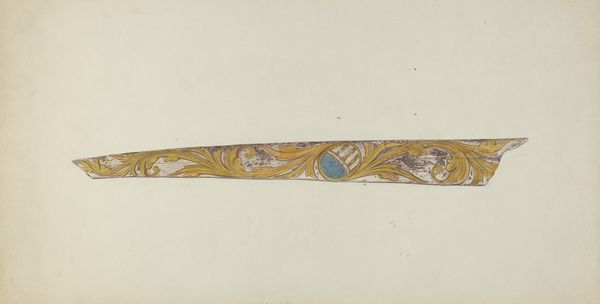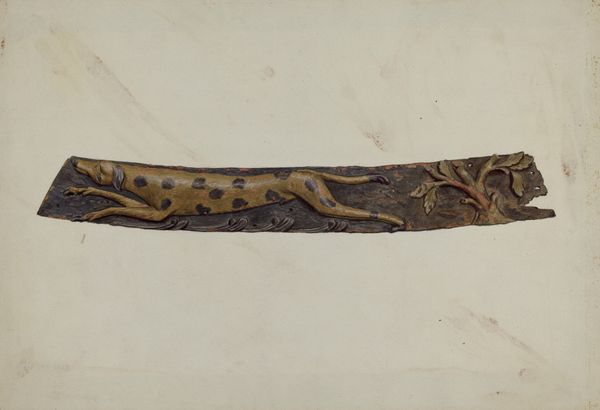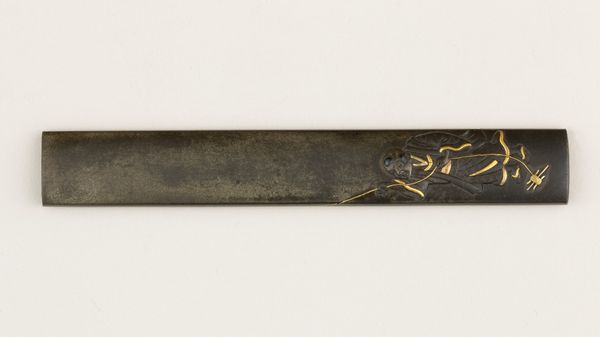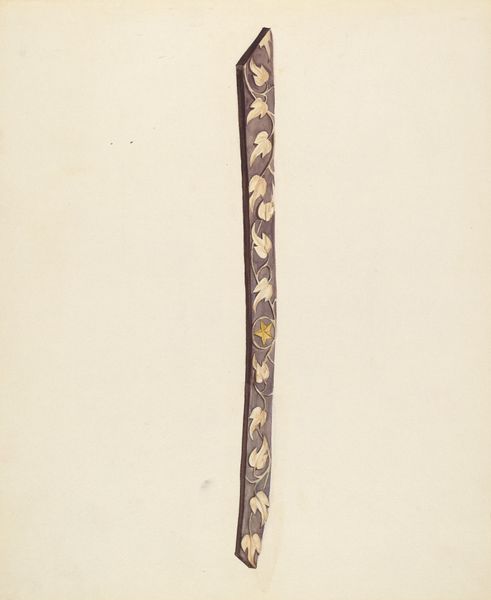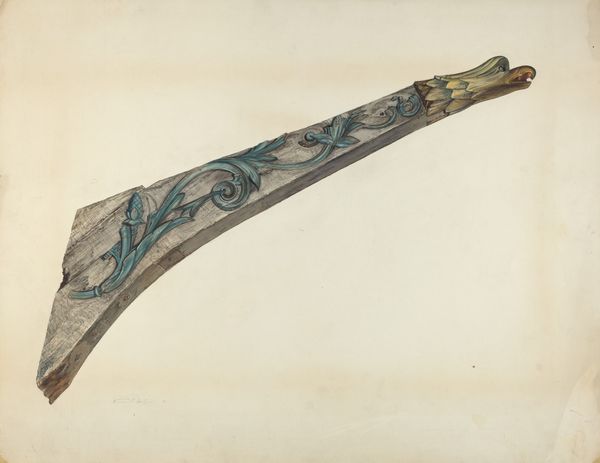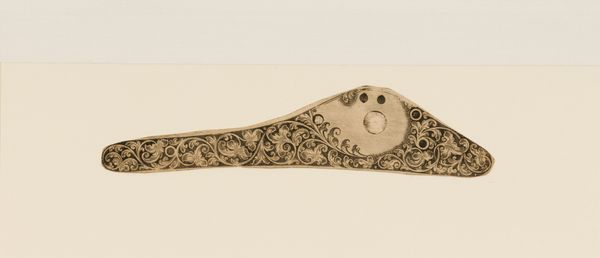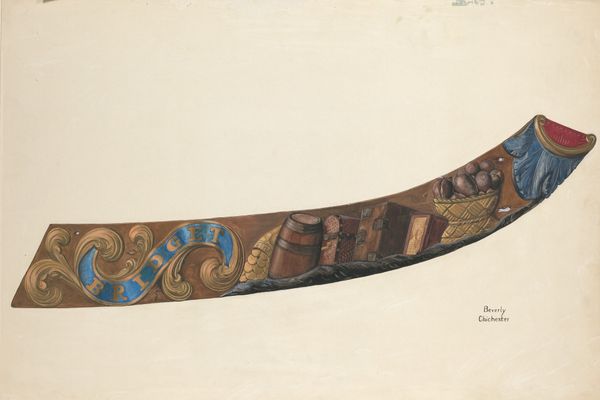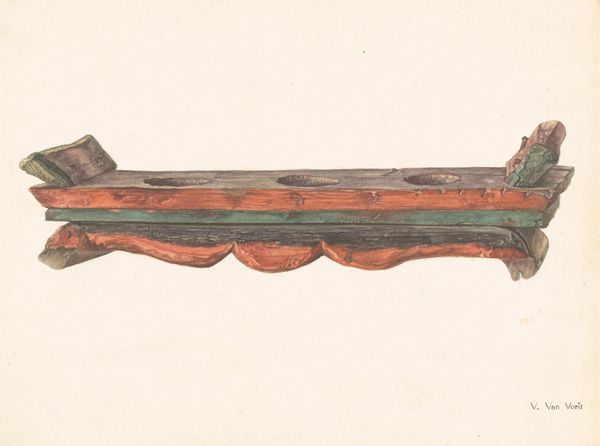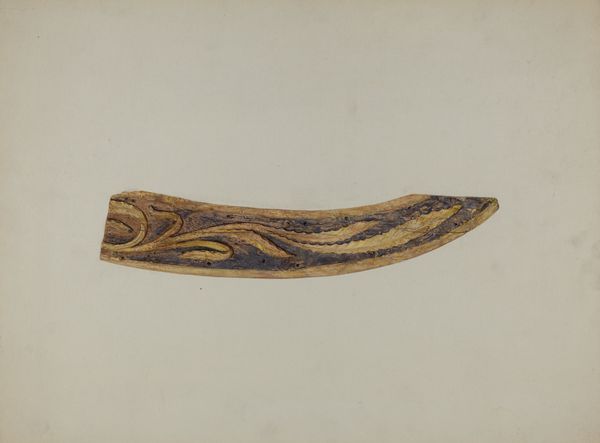
drawing, watercolor, wood
#
drawing
#
watercolor
#
ceramic
#
ink colored
#
wood
#
watercolour illustration
#
watercolor
Dimensions: overall: 51 x 21.2 cm (20 1/16 x 8 3/8 in.) Original IAD Object: 72" long
Copyright: National Gallery of Art: CC0 1.0
Editor: We’re looking at “Woodcarving from Ship’s Bow,” dating to around 1938. It seems to be a drawing, primarily watercolor, of a decorative piece, presumably from a ship. The golden, stylized leaves against the teal background really pop. What strikes you about this piece? Curator: The most compelling aspect of this work resides in the interplay between form and representation. Note the sinuous lines of the vegetal ornamentation: do you observe how they serve to create both movement and containment? The composition establishes a formal tension. Editor: Yes, the way the golden design flows across the teal, but also is so clearly defined. Curator: Precisely. Observe also the use of color. The artist contrasts gold, often associated with value and opulence, against the teal, a hue suggestive of maritime environments. This juxtaposition prompts consideration of the relationship between craft, commerce, and aesthetics. How do you perceive that? Editor: I see what you mean – a sort of elegance married to the functionality of the ship. It feels like a celebration of maritime design. The artist really focuses our eye on how the abstract shape interacts with this leaf pattern. Curator: A succinct and astute observation. The essence of this drawing lies not in its mimetic representation of a ship's bow, but rather in its articulation of formal relationships and material contrasts. Its beauty is borne from pure design. Editor: That’s really interesting, it’s shifted how I see it. Focusing on just those visual elements makes the artwork more abstract and striking. Curator: Indeed. By shifting our gaze from symbolic meaning to formal organization, the intrinsic artistic intention becomes more lucid.
Comments
No comments
Be the first to comment and join the conversation on the ultimate creative platform.
